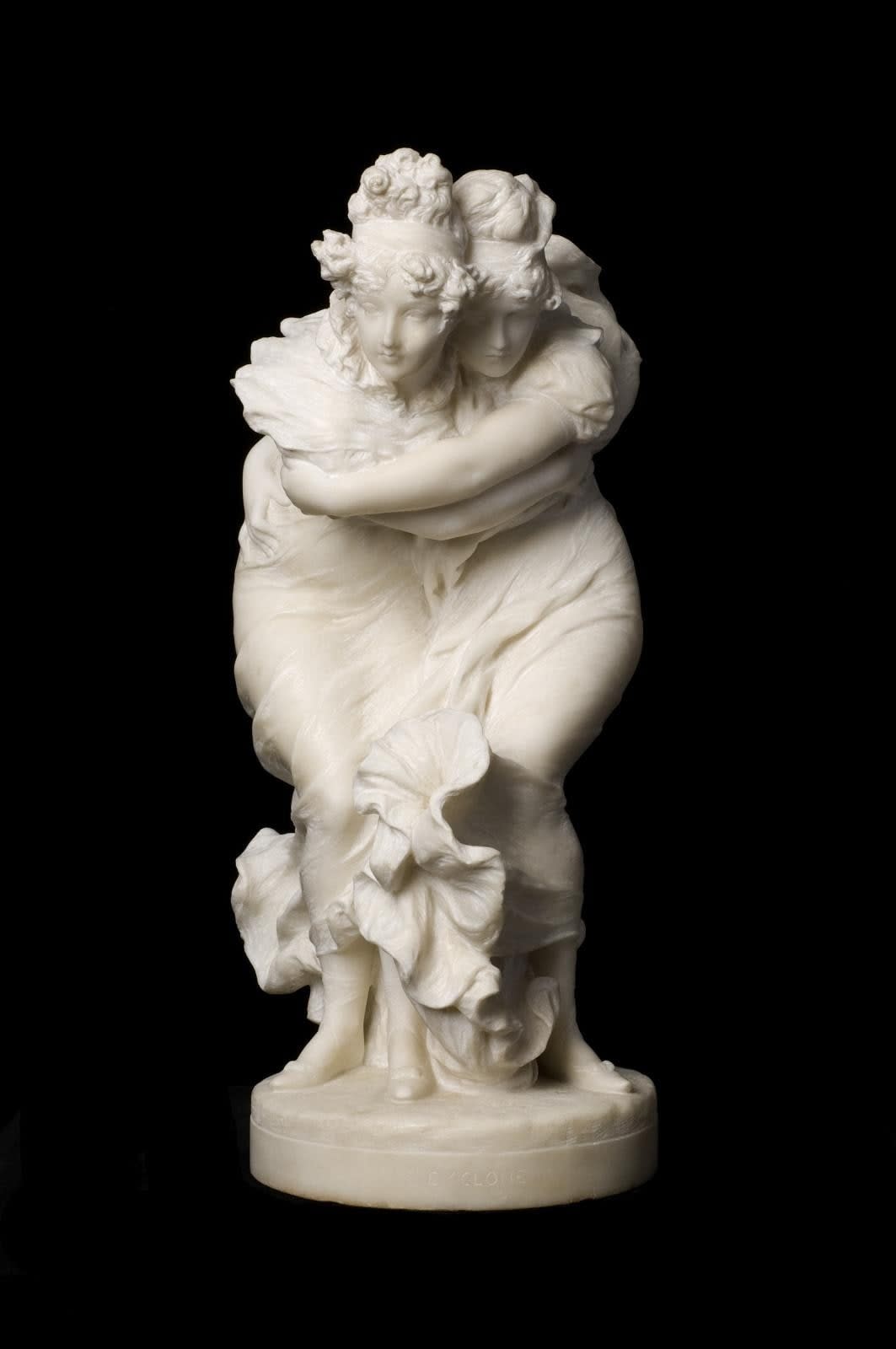artist
D’Epinay was not a sculptor of just a decorative order. He had an impressive career and body of work. His busts of high society are well noted and include a portrait of Edward, Prince of Wales, which was purchased by Queen Victoria. He worked in London but also worked and exhibited in Paris and had studios in Rome and Mauritius. One of his best-known works is Joan of Arc, located in the Reims Cathedral. Most recently, in July 2018, d’Epinay’s marble Sylvie, a Romantic female nude depicted combing her hair, sold for an impressive $334,000 at Sotheby’s. As the auction house notes of his work in their July 2018 19th and 20th century Sculpture catalogue:
Prosper d’Épinay was responsible for some of the most beautiful and elegant marbles of female subjects made in the 19th century, a point that was underscored in 2015, when his Bonne Renommée sold for a record £800,000.
In 1874 d’Épinay presented La Ceinture dorée (The Golden Belt) at the Salon, an ‘ideal representation of the modern woman’ (Roux Foujols, op. cit., p. 36) that would become his most celebrated marble. Beginning with Ceinture dorée, d’Épinay created his very own, Second-Empire interpretation of the Greek ideal in his female nudes. Reverting to the roman elegance of Antonio Canova, he imbued his marble maidens with a languid softness of form, developing the néo-grec current cultivated by predecessors such as James Pradier. D’Épinay’s unique style, which combined Italian and French artistic traditions, was summarized by the critic Thiébaut-Sission in his 1887 article on the sculptor’s work as ‘L’Art élégant.’
literature
P. Roux Foujols, Prosper d’Épinay (1836-1914): Un mauricien a la cour des princes, Mauritius, 1966, p.50







